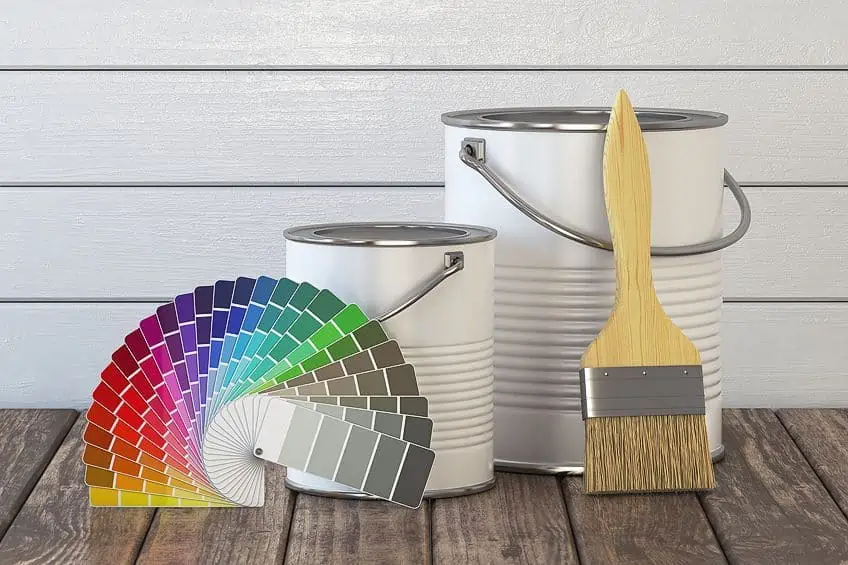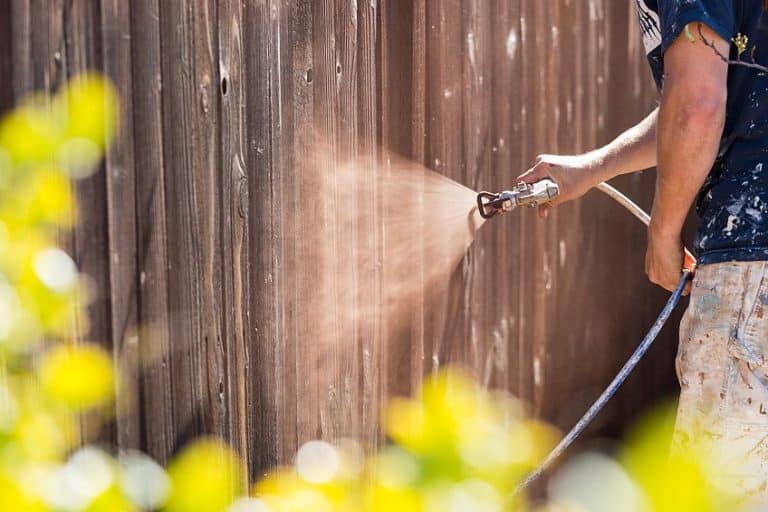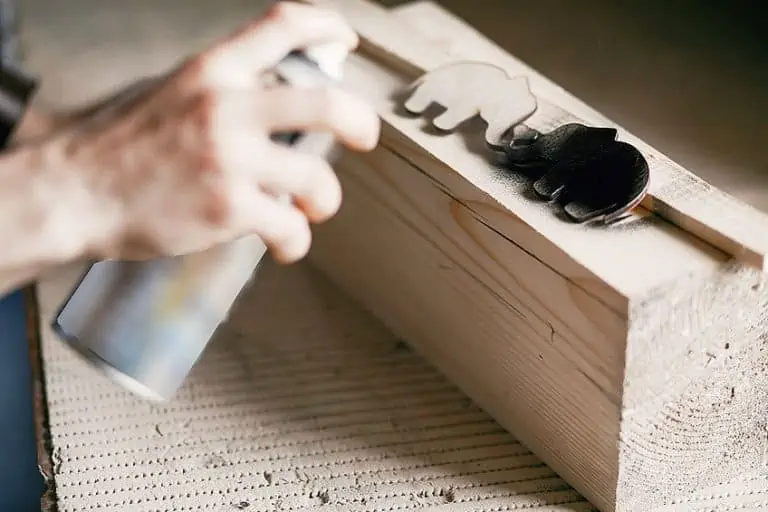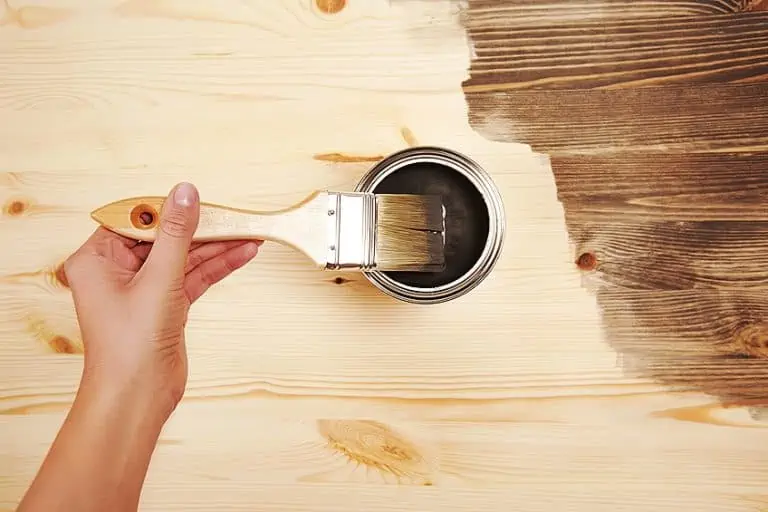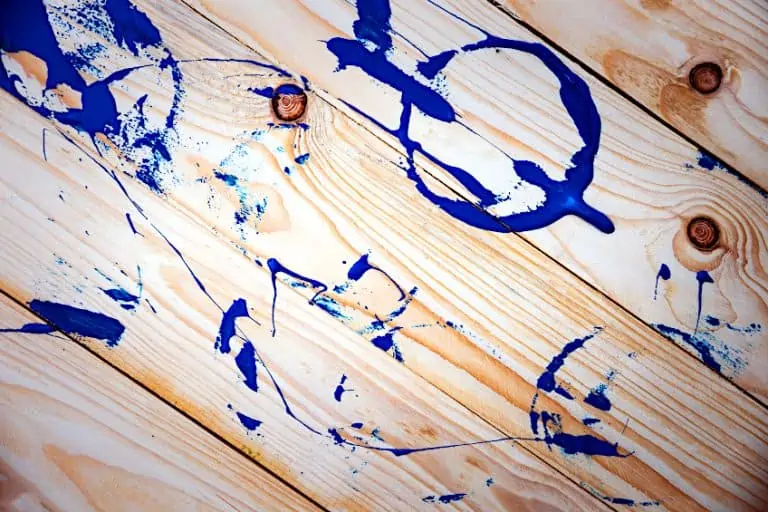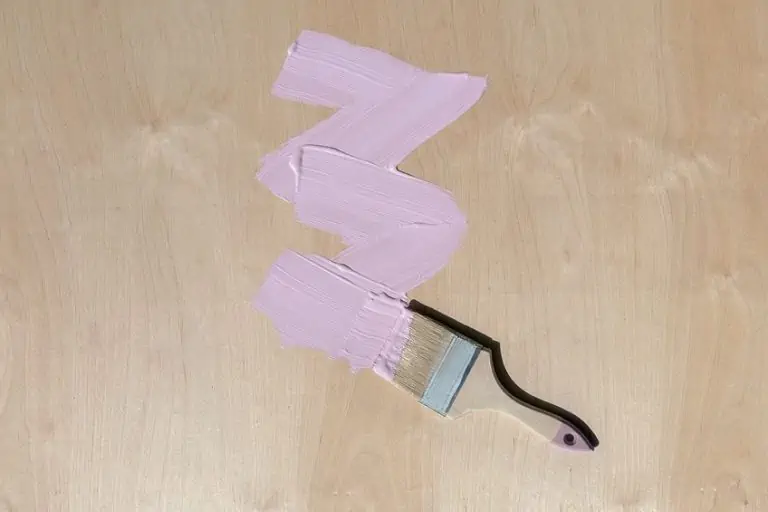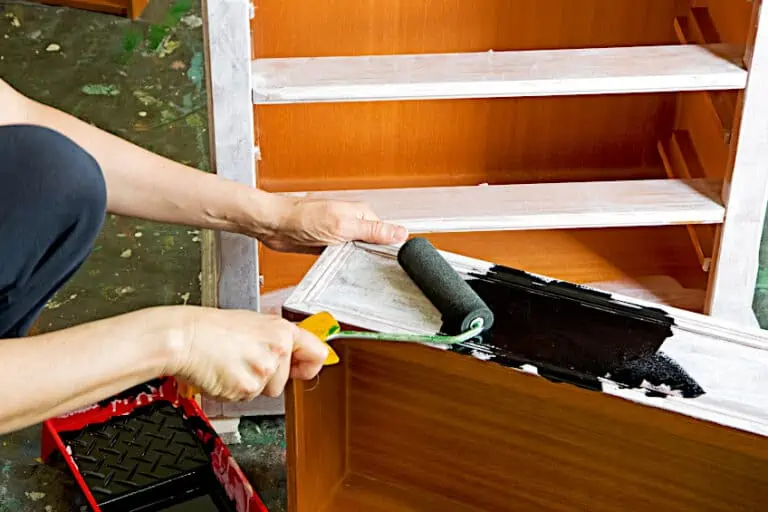How to Paint Outdoor Wood – Complete Guide with Tutorial
Your family home has been looking a little shabby, so you decided to give it a new lick of paint. You have always been a fan of wooden houses, their rustic feel is ever so endearing and full of loving memories, and smells of varnish and polish. This tutorial is all about the best outdoor paint for wood, which is perfect for the exterior walls of your home, our outdoor patio furniture, and a whole lot more. We will cover what other uses exterior wood paint might have, the various waterproof paints for wood, and the best outdoor furniture paint.
Table of Contents
How to Paint Outdoor Wood
Now we can get into the instructions for the paint for outdoor furniture. Actually, these instructions can be applied to other outdoor wooden items, and not just outdoor furniture paint jobs. You need not look up exterior paint reviews or this one, because we have everything you need to know in this following section – in terms of the practical side of the paint application. But, then again, maybe you are the type to prefer this bit of research and gather your own and more informed decision.
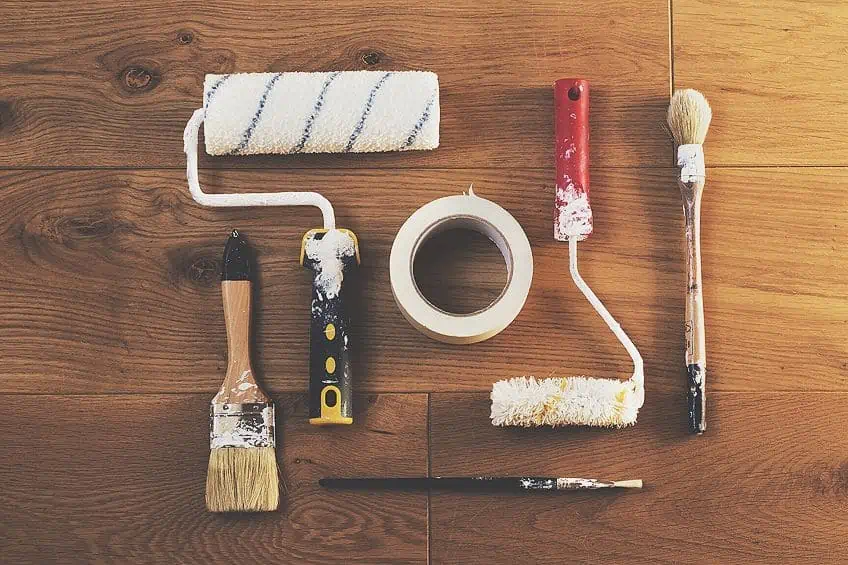
To make sure that your next outdoor project looks great, let’s take a moment to review some of the tools you will need and how to use them to make sure that they do! Gather the following tools and materials to get started.
- Primer
- Optional sealer
- The paint of choice
- Respiratory mask
- Floor protection
- Fine sandpaper or power sander
- Protective gloves
Prepare Your Workspace
If there is anything that you are going to paint, the most important thing is to prepare both the workpiece and the workspace first. There will be more time spent on the job at hand than running off to search for a forgotten tool. There is nothing worse than having to stop and start the whole time, so ensure that you have collected and purchased everything you might need before you begin. In the event you work on outdoor wood, a level of preparation is especially important, especially if you can’t move the workpiece and you need to paint it on location.
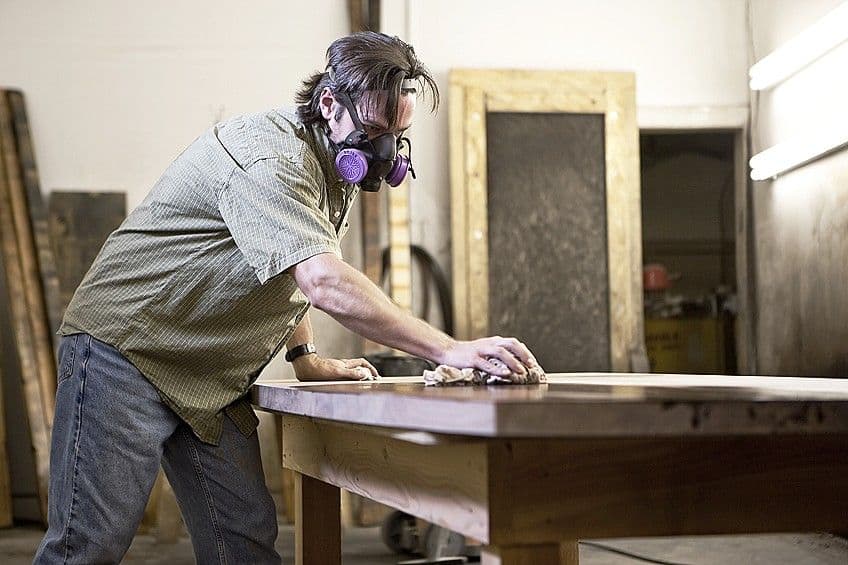
Firstly, prepare the area you plan to work in and then put down a covering on the floor and use painter’s tape to cover up any areas of the workpiece or the immediate environment which you do not want to get splattered with paint. Especially if you plan on using a paint sprayer in this project, it is an important step that should be carefully followed. After ensuring that all of your tools are easily accessible and readily available in front of you, ensure that they are placed in both your dominant hand and the side of your workpiece directly in front of you.
It will be helpful to your health if you open up the windows to bring ample ventilation into your workspace – these paints have fumes that are toxic for us.
Wood Preparation
In addition to cleaning the wood thoroughly, it should also be free of any oil residue, dust, or other substances. The best thing to do before painting a wooden surface is to sand it until it is smooth and even, as this will remove any uneven or old paint, as well as create an even more adherent surface for the paint to adhere to. One more aspect is ensuring that the wooden surface you are working with is not grimy or dirty at all. Make sure that you sufficiently clean it with a cloth and some soapy water, and once that is complete, make sure that it has dried sufficiently before you move on to the next step.
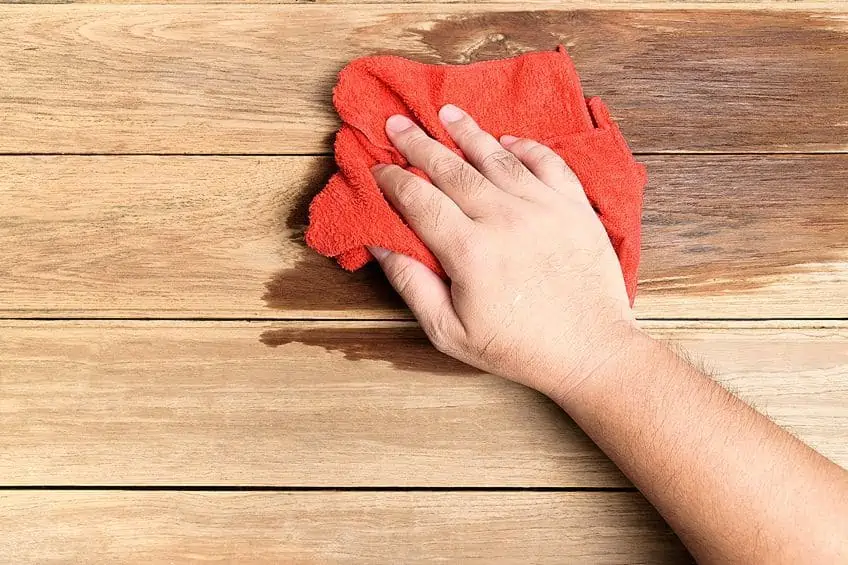
Priming Your Workpiece
Any painting process would not be complete without the proper priming of your workpiece. The painting itself will not have to be primed first, so you will not have to waste time waiting for the primer to soak into the wood. The self-priming paint is an ideal way to save time during this process since it eliminates the need for the primer step. Ultimately, priming the surface is something you can, or should not avoid.
If you were to avoid this step, the paint would not stick as you desired to the surface of the wood.
Without the primer to hold it to the surface, it might start to lift off the surface like small, or even large, bubbles that are inevitable when faced with bad weather conditions. The primer helps to maintain the weather resistance for a longer period of time. For these reasons, you should ensure that when you apply your primer to outdoor furniture, you do not only coat the face of the board, but that you also clean all of the little nooks and crannies of the wood. When using a brush to apply your primer you might have an edge considering you will be up close and personal to your workpiece, therefore spotting these areas will be more likely to occur to you.
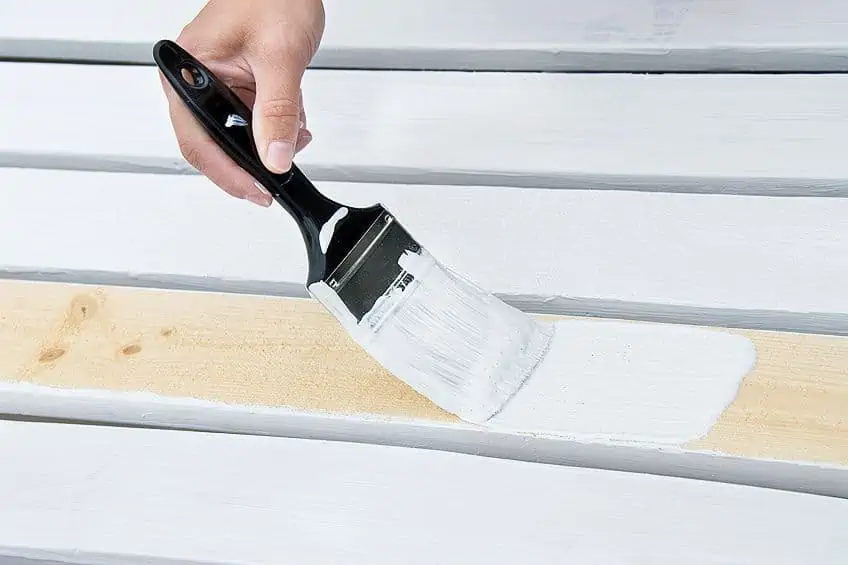
Nevertheless, if you are using spray paint, you could be missing a few spots as you are normally at a bird’s eye level. However, more than likely, you will be able to apply more coats of primer using a sprayer much quicker and with a great deal less effort if you choose to do the job by hand, so you have to make the decision as to how you should go about it.No matter what method you choose to use, prior to moving on to the next step, ensure that you have let your primer dry for the time recommended by your manufacturer.
Painting the Workpiece
It is recommended that, following the application of your primer, you give your piece of work one more light sanding before the paint is applied. By dusting off any wood particles from the workpiece using a dry cloth, you can ensure that it will be free of wood particles. Now for the part that may get you excited, the actual application of the paint. Make sure that you read all of the specifications on the label of the paint before you start anything.
Now that the preparations have been completed, you can choose the method for applying the outdoor paint for wood. You can either choose to spray the paint on with a pressurized sprayer, or you can use a roller or a brush for a mere manual approach.
In the event you plan on using a brush and roller set-up, be sure to use a roller with a fine nap, since they are appropriate for outdoor wood paint, and make sure the brush head is of the proper width proportional to the size of the board you will be painting. In order to provide total efficiency on each board, it is highly recommended that you paint following the length of the board in order to get paint in all of those hard-to-reach areas. The roller should be used for the meat of the work, and the brush should be used for touching up areas where the roller was unable to reach.
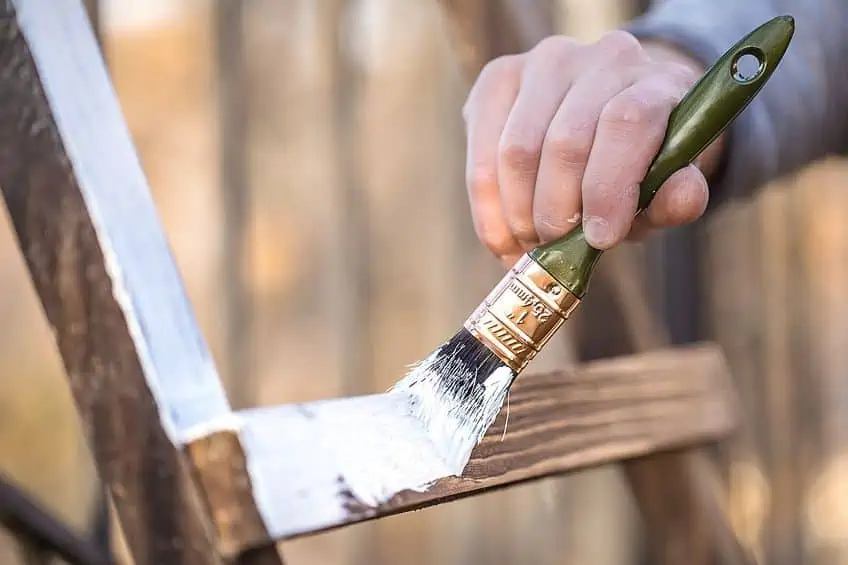
You should ensure that you are several feet from your workpiece, especially if you are using a paint sprayer. This minimizes the amount of overspray, splatter, and peeling. As you learn how to spray the right pressure, try spraying away from your chosen surface for a good feeling of how to use the trigger, and once you get the hang of it, just move your wrist over your selected surface in one smooth, uninterrupted motion. It is recommended that if you are left-handed, you spray from right to left, and if you are right-handed, you spray from left to right to ensure that you get a good range of motion.
If needed, you should apply several coats of paint, and allow each coat to dry completely before applying the next. This may vary depending on the paint for the outdoor wood you have chosen. As a result, you should always consider the manufacturer’s drying instructions when determining the appropriate drying time.
Sealing Your Workpiece
There is no requirement to seal your workpiece. However, it is strongly recommended, since most of the furniture you will be painting will be outside for a very long time. There are various methods to apply the sealer, as well as many different versions of the sealer that will be more suited to certain weather conditions. Make sure you are aware of what is needed from your sealer before you purchase it.
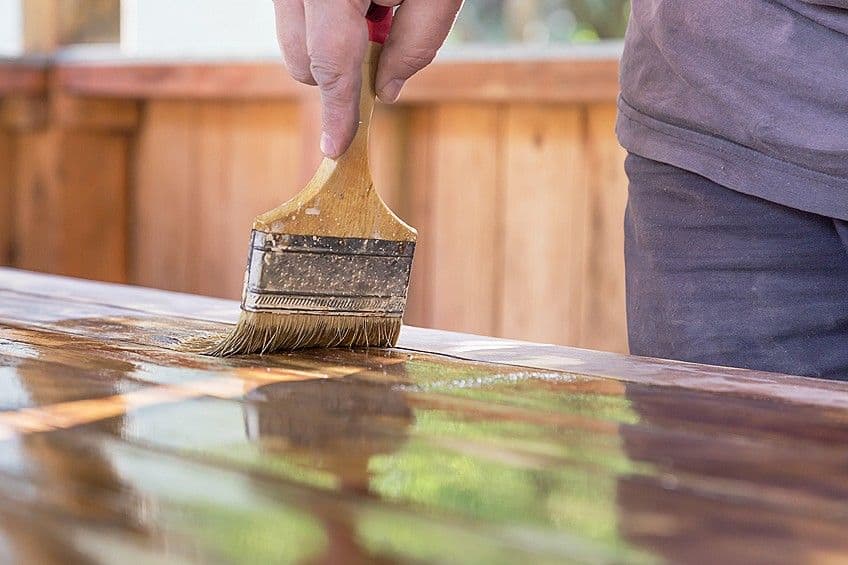
In addition to self-sealing paints, there are some paints that have weather-resistant properties, such as those rated to be used on marine vessels. However, since you are unlikely to use this in place of outdoor furniture paint, you will need to seal it with a sealer. As soon as your paint is dry, you can saturate it with the sealer using a brush or a sprayer. Typically only a single layer of sealer is necessary, but you should always bear in mind the state of your climate and possibly consider a second layer.
Suitable Paints for Outdoor Wood
Finding the best outdoor paint for wood is not a very complicated task, but you might not have the faintest idea of what to search for first. Various types of paint are available on the market for different purposes, and each can make an important contribution to the aesthetics of a surface, from indoor paints to exterior wood paint, but only a select few are okay to use outside. There are a few variables at play that will affect the efficiency of the exterior wood paint, like the climate, invading insects, or circumstantial damage.
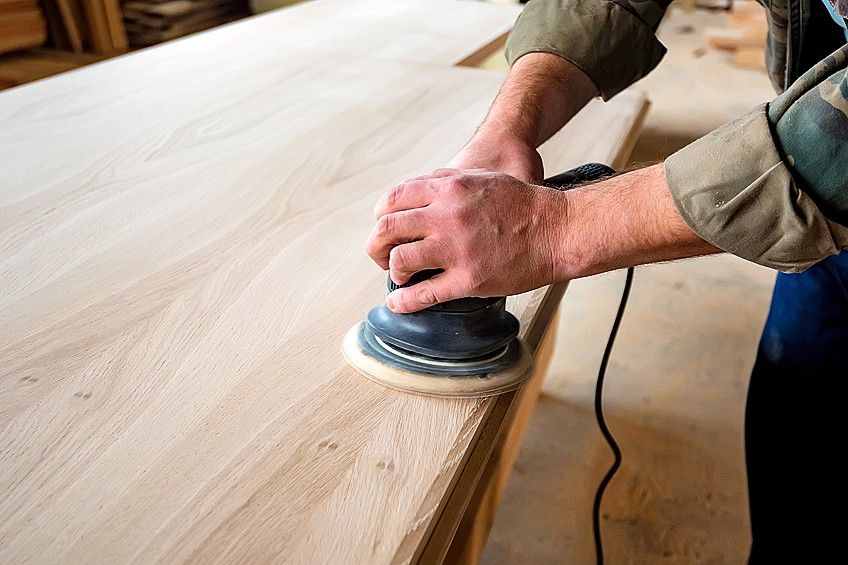
There are amazing exterior wood paint reviews all over the Internet, so all you need to do is go searching for some, and you can make your own informed decision. Most of our opinions are based on other people’s opinions, so all you need to do is type out, exterior paint reviews into the search engine and you will find all that you need. If waterproof paint for wood is what you are looking for, then you might also find reviews for the best ones there. Here is a table with a summary of the various paints that are suitable for outdoor wood painting.
| Paint Type | Suitable for Outdoor Wood |
| Gouache | ✗ |
| Flat paint | ✗ |
| Latex | ✓ |
| Acrylic-based paint | ✓ |
| Watercolor Paint | ✗ |
| Oil-based Paint | ✓ |
| Eggshell-based paint | ✗ |
Oil-Based Paints
The majority of wood surfaces can be painted with oil paints. Being originally designed for use on wood, it makes a perfect waterproof paint for wood, but they are also suitable to be applied to other surface materials like plastic and metals.
Unlike other types of paint, oil paints possess unique properties owing to their oil base, which allows them to seep into tiny crevices and bind to the surface.
Fortunately for you, it means that the paint for outdoor wood will become part of the actual workpiece rather than simply coating the surface. One advantage of the use of this form of coating is that it can withstand harsh conditions, but at the same time, it is often difficult to remove once it has been applied. Upon drying, oil paints are also generally resistant to heat and water.
Acrylic-Based Paints
There may be a misconception that since it is usually the less expensive paint compared to oil-based paints, it might not be as suitable as those mentioned above. The reality is, however, quite different. Acrylic paint tends to be cheaper than oil-based paint due to its ease of manufacture. Wooden houses are not the only material that gets painted but also houses made of brick, stone. plaster, and more. Acrylic paints have soared in popularity over the choice of oil-based paints because of their versatility.
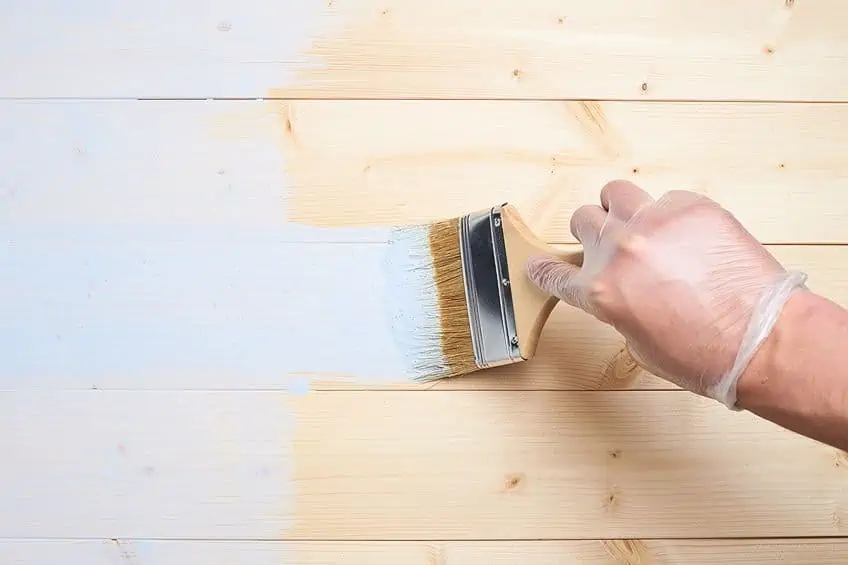
Despite the fact that acrylic paint is not as adherent as oil-based paint, they still provide good protection against external forces in addition to bright, radiant colors that can survive all kinds of harsh weather. Exterior paint reviews for acrylic-based paint can be quite informative so feel free to find as much information that you might need. There is a higher variety of color choices that you can choose from than what you will get with oil-based paints. This makes it easier when you want to personally design the item or wall that you are painting.
Latex Paints
There are some major similarities between acrylic-based paint and latex-based paint, but the difference is that it is as durable when it comes to the conditions that come with the climate. Weather plays a big part in the lifespan of a paint job. Since they were first invented, latex-based paint has improved in its durability and versatility but it is still the weaker paint, especially as an outdoor paint for wood.
The base of Latex paint is water, so this means it will be more water-soluble, making it not a suitable waterproof paint for wood. Acrylic paints have a certain amount of chemicals that are lacking in latex paint, and this is where their lack of strength comes from.
That being said, latex paint is still considered good paint. Whether or not it can be used as an outdoor furniture paint, there are many uses that it is still good for. The progression of the paint’s formula sets some excitement for the future in terms of how it can improve further. This means you can keep your eyes out for any consumer’s opinions of a possible latex-based exterior paint – who knows what is in store.
The Best Outdoor Paint for Wood
Objectively, there are only two types of paint that could be considered the best outdoor paint for wood, being acrylic- and oil-based paints. However, this is generally speaking, as there are many paints out there that are conducive to applications that don’t require iron-clad protection – and might even provide a better finish.
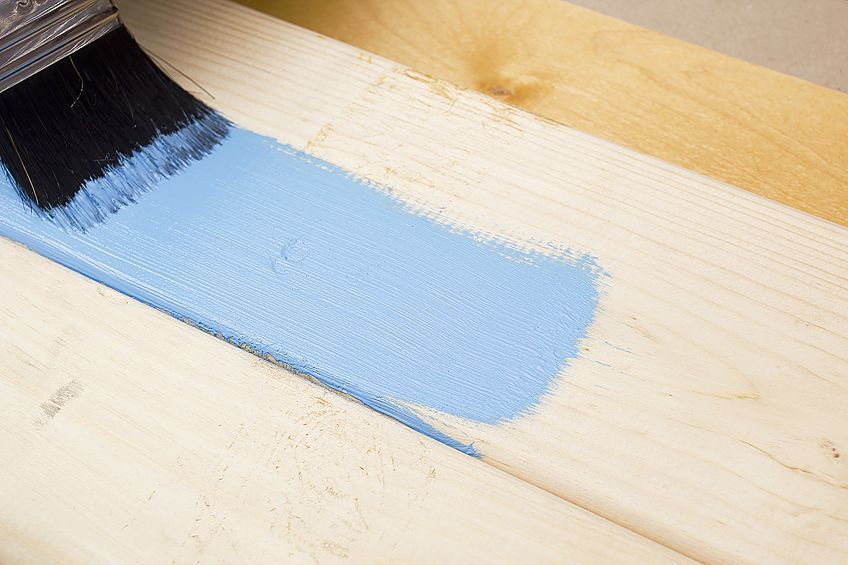
Even though not every job requires protection that is comparable to a knight in armor because they will not be bracing the weather conditions.
It is now time to use your newly acquired knowledge to try out the best outdoor paint for wood you have come across, learn why refinishing your outdoor furnishings is a good idea or at least a fun project, and how to paint your outdoor furnishings. Never forget the importance of safety. In order to protect your skin from the chemicals in the paints, we suggest that you adorn yourself in some protective gear like gloves and a face mask. Now, with all of this information, you can start to apply it practically to our project.
Frequently Asked Questions
Will Wood Become Waterproof If Painted?
Generally, coating any wood in paint results in a water-resistant surface due to the properties of paint. Due to the nature of the painting’s composition, it naturally sheds water. Regardless of how well your wood paint is waterproof, it will not guarantee absolute airtightness. In general, paint is susceptible to wear from external factors and age, so sealing wood after it has been painted is always a good idea.
Which Particular Type of Paint Should I Use on My Outdoor Furniture?
There are a limited amount of paints that will be suitable for outdoor use. All you need to do is read the label of the paint can and there you will find what materials it is suitable to be applied to, as well as how durable it will be when used outdoors. Oil paints are a great option, so are acrylic paints because they add elements of waterproofing.
Can Furniture be Waterproofed With Sprays?
In order to waterproof wooden furniture, you can use paints. However, if you intend to waterproof upholstery, you will need an entirely different product. It is possible to buy sprays that have a polyurethane base in order to ensure that water runs directly off the natural and synthetic materials made into couch cushions or lawn chair pillows. Most home improvement stores carry these items and they are often overlooked, however, they are very useful.

I have been into woodworking since 2005 and woodturning since 2011. Because of my love for wood and woodworking, I started woodhappen.com to teach other enthusiasts about how to finish and seal wood, the best woodworking tools, the different types of wood, and everything else related to woodworking! Read more about me here.

